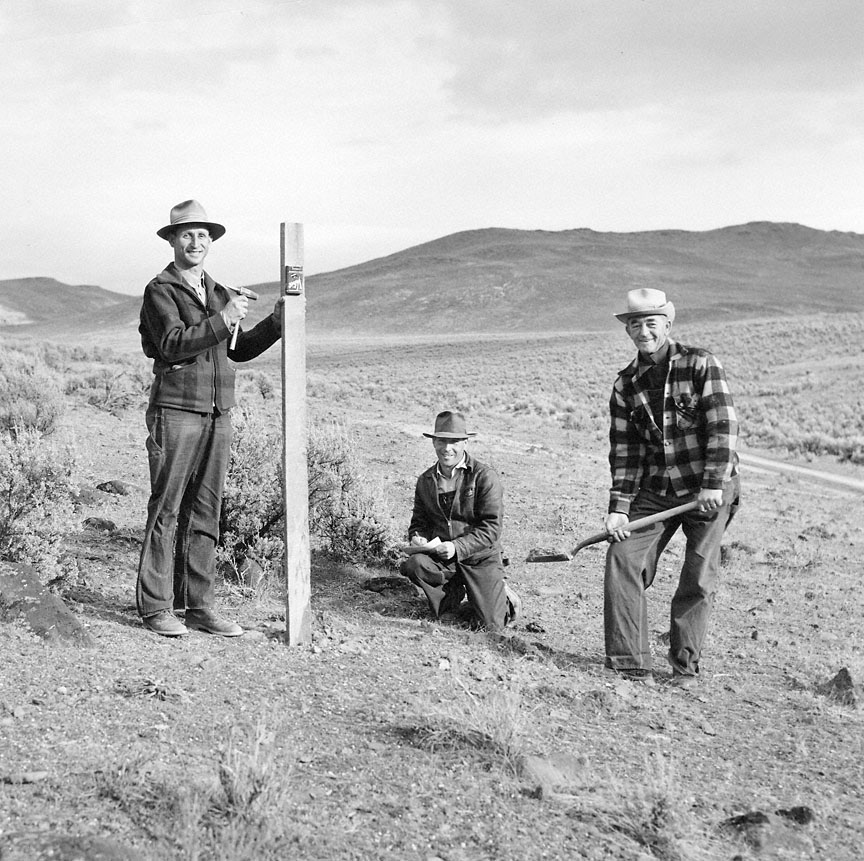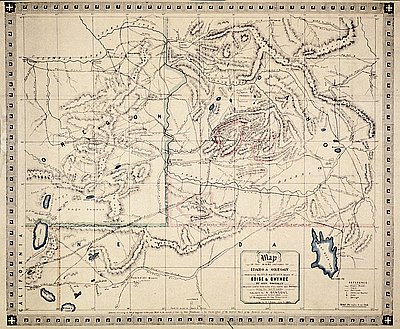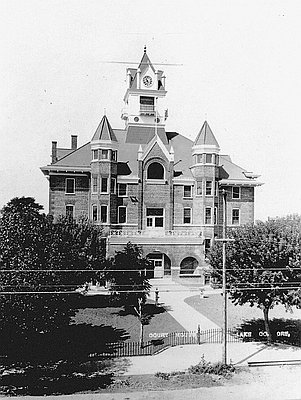This photograph was taken by Harano Studio of Ontario, Oregon, in March 1954. It shows Lee Gibson, Allen Berends, and Elden Berends, all from Marsing, Idaho, staking a claim for uranium in Malheur County.
Uranium was first discovered in Oregon in the 1930s, when several deposits were identified in the headwaters of the Deschutes River. More deposits were found in the Steens Mountain area in the late 1940s, but it was not until the mid-1950s that a large-scale uranium rush developed in the state. By then the federal government was offering a $10,000 reward to anyone who discovered a substantial deposit of the radioactive ore, which at the time was used primarily in the production of atomic weapons.
Throughout the latter half of the 1950s and early 1960s, hordes of prospectors combed over the state with geiger counters in hand, searching for uranium. Southeastern Oregon became the focus of many of these prospecting activities. Dozens of hopeful prospectors staked claims in the area, including the three men shown in the photograph above, but only two claims would turn out to be commercially viable. In July 1955 two large deposits, the White King and the Lucky Lass, were discovered within a mile of each other in the Fremont National Forest about fifteen miles from Lakeview.
The Lakeview Mining Company, owned by a group of venture capitalists from Colorado and Texas, invested heavily in the two open-pit mines. It was a boom time for uranium mine owners, as the Atomic Energy Commission was busy setting new records in weapons production. In January 1956, the federal agency revealed that it had spent $254 million on nuclear materials during the previous year, mostly uranium, and that the United States had stockpiled more than $1 billion worth of nuclear materials “for future operations.”
Responding to the government-induced uranium boom, the Lakeview Mining Company built a uranium processing mill in Lakeview in 1958. The boom soon turned to bust, however, when the uranium market went sour. Moreover, production problems plagued the company’s mines and, to make matters worse, two of its principal investors died. After less than two years of operations Lakeview’s $3.6 million uranium mill was shut down. The two mines continued operating intermittently through 1964.
Interest in Oregon’s uranium deposits peaked again in the mid-1960s and mid-1970s, but the Lakeview mill and its two mines never reopened. In 1995, the U.S. Environmental Protection Agency declared the White King and Lucky Lass mines Superfund sites. Management of the wastes at the two contaminated sites is ongoing.
Further Reading:
Amundson, Michael A. Yellowcake Towns: Uranium Mining Communities in the American West. Boulder, Colo., 2002.
Ringholz, Raye C. Uranium Frenzy: Saga of the Nuclear West. Logan, Utah, 2002.
Written by Cain Allen, © Oregon Historical Society, 2005.


